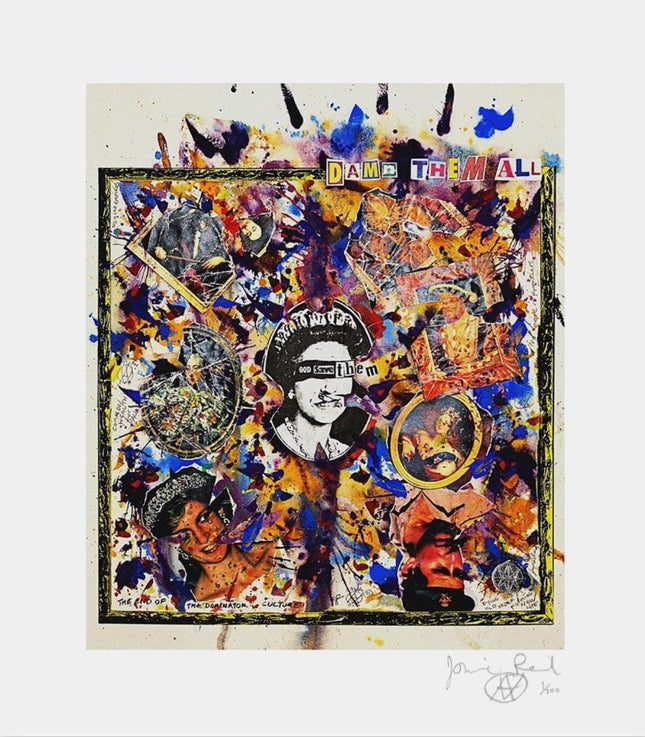
Prince & King

Jamie Reid Damn Them All Giclee Print by Jamie Reid
Damn Them All Artwork Giclee Limited Edition Print on 290gsm Hahnemühle Bamboo Paper by Pop Culture Graffiti Artist Jamie Reid. 2019 Signed & Numbered Limited Edition of 300 Artwork Size 24.1x27.6 Jamie Reid's "Damn Them All" is an evocative masterpiece that vividly embodies the essence of pop culture, graffiti, and street art. Crafted in 2019, this artwork is a testament to Reid's enduring influence in the realm of contemporary art, offering a captivating blend of vivid hues, intricate collage elements, and pointed socio-political commentary. The artwork stands as a limited edition giclee print, with only 300 pieces ever produced, each impeccably printed on premium 290gsm Hahnemühle bamboo paper. This meticulous choice of medium not only ensures the artwork's longevity but also accentuates its vibrant details. Each piece is hand-signed and numbered by Reid, making every print a unique collector's item. Delving into the artwork's history provides an intriguing context. The piece draws its inspiration from an original collage Reid created for a magazine publication by The Guardian, which delved deep into the themes of republicanism. Furthermore, the iconic image resonates with punk aficionados, as it was employed for the cover of the 1977 "God Save the Queen" by The Sex Pistols, a song that shook the foundations of the British establishment. Each detail, from the playful juxtaposition of cultural symbols to the rebellious undertones, encapsulates the spirit of a time when art and music sought to challenge societal norms. Measuring at 24.1 x 27.6 inches, "Damn Them All" is not just a visual treat but a historic statement, exemplifying Jamie Reid's unparalleled ability to intertwine art with cultural and political discourse. Edition of 300, printed on 290 gsm Hahnemühle bamboo paper, signed & numbered. Artwork image used for the cover of God Save the Queen in 1977 by The Sex Pistols. Damn Them All is a limited edition giclee print by Jamie Reid. Derived from an original collage made for a magazine issued by The Guardian with a lead story on republicanism. From an edition of 300, printed on 290 gsm Hahnemühle bamboo paper, the piece is signed and numbered by the artist. 24.1 x 27.6in
$946.00$804.00


